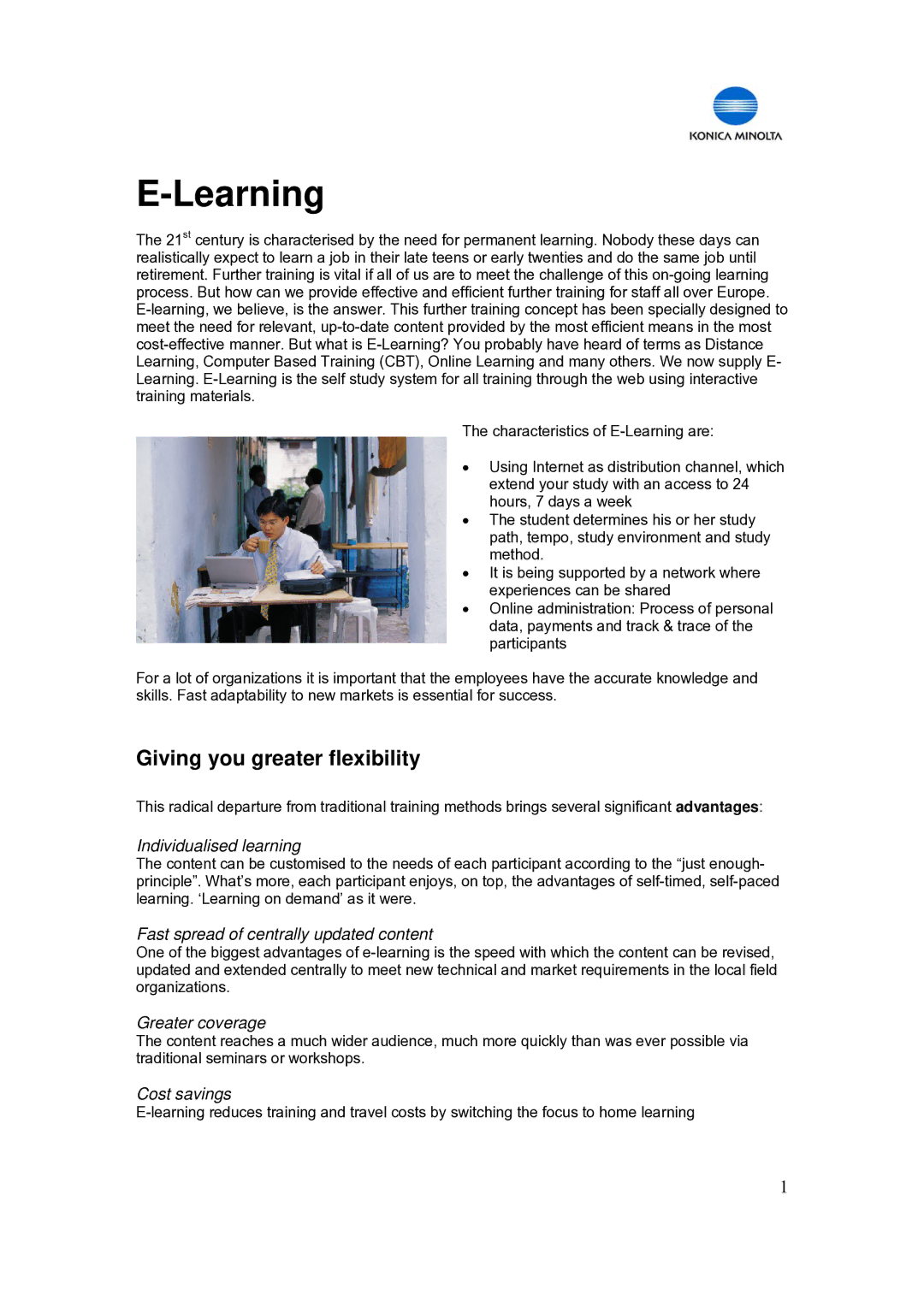
E-Learning
The 21st century is characterised by the need for permanent learning. Nobody these days can realistically expect to learn a job in their late teens or early twenties and do the same job until retirement. Further training is vital if all of us are to meet the challenge of this
The characteristics of
• Using Internet as distribution channel, which extend your study with an access to 24 hours, 7 days a week
• The student determines his or her study path, tempo, study environment and study method.
• It is being supported by a network where experiences can be shared
• Online administration: Process of personal data, payments and track & trace of the participants
For a lot of organizations it is important that the employees have the accurate knowledge and skills. Fast adaptability to new markets is essential for success.
Giving you greater flexibility
This radical departure from traditional training methods brings several significant advantages:
Individualised learning
The content can be customised to the needs of each participant according to the “just enough- principle”. What’s more, each participant enjoys, on top, the advantages of
Fast spread of centrally updated content
One of the biggest advantages of
Greater coverage
The content reaches a much wider audience, much more quickly than was ever possible via traditional seminars or workshops.
Cost savings
1
